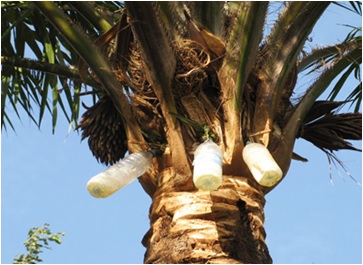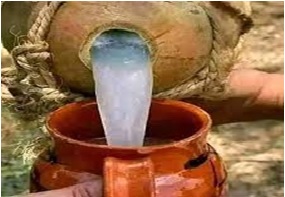ENTER A PRODUCT: Submission #38
Secondary tabs
Submission information
Submission Number: 38
Submission ID: 44
Submission UUID: 68b972fd-0655-4ebb-b15a-180c27452f02
Submission URI: /slowfood/form/segnala-un-prodotto-bk1
Created: Wed, 03/22/2023 - 13:07
Completed: Wed, 03/22/2023 - 13:10
Changed: Tue, 09/19/2023 - 12:58
Remote IP address: (unknown)
Submitted by: admin-form
Language: English
Is draft: No
Current page: Complete
Webform: ENTER A PRODUCT
General Info
Legmi
| Category |
|---|
| Bevande distillate e fermentate |
Geographic area: Isole Kerkenna, Tunisia
Latitude: 34.7219581
Longitude: 11.156696
Location: 34.721958,11.156696
Formatted Address: Isole Kerkenna, Tunisia
State/Province: Governatorato di Sfax
Country: Tunisia
Country Code: TN
Latitude: 34.7219581
Longitude: 11.156696
Location: 34.721958,11.156696
Formatted Address: Isole Kerkenna, Tunisia
State/Province: Governatorato di Sfax
Country: Tunisia
Country Code: TN
Product description
Legmi is the liquid, syrupy and whitish sap of the date palm. It is a traditional drink from southern Tunisia, and more exactly from the regions of Kerkennah, Gabès, Tozeur and Douz.
There are two versions of legmi: the natural drink or the alcoholic version, also called dead legmi “لاقمي ميت”, obtained by fermenting the juice. When freshly harvested, legmi is white and milky in color, soft and sweet. Over the hours, fermentation transform the sugar in alcohol and the sap becomes sparkling and darker in color.
In fact, the fermentation of Legmi is almost spontaneous. On the first day of its extraction, it already has a concentration of between 1 ° and 2 ° ethanol. Only 2 hours later, the level of ethanol changes to 5 ° then triples after 72 hours to stagnate at 15 °. If the extract is not stored by the fourth day, the sweet taste disappears to give way to a strong acidity.
The word legmi (or lagmi; in Libya also legbi and Siwa lebgi) is the Arabic source, but it also entered all Berbers dialects by the word Laga Bi-ya which means "I love him." It has sometimes undergone changes in different regions of North Africa.
There are two versions of legmi: the natural drink or the alcoholic version, also called dead legmi “لاقمي ميت”, obtained by fermenting the juice. When freshly harvested, legmi is white and milky in color, soft and sweet. Over the hours, fermentation transform the sugar in alcohol and the sap becomes sparkling and darker in color.
In fact, the fermentation of Legmi is almost spontaneous. On the first day of its extraction, it already has a concentration of between 1 ° and 2 ° ethanol. Only 2 hours later, the level of ethanol changes to 5 ° then triples after 72 hours to stagnate at 15 °. If the extract is not stored by the fourth day, the sweet taste disappears to give way to a strong acidity.
The word legmi (or lagmi; in Libya also legbi and Siwa lebgi) is the Arabic source, but it also entered all Berbers dialects by the word Laga Bi-ya which means "I love him." It has sometimes undergone changes in different regions of North Africa.
A palm tree produces a daily volume of sap of 5-6 liters, an operation that requires 3 months to exhaust the source. The tree is then left to regrow for a period of 4 years.
The legmi legally sold is fresh and not alcoholic. In the archipelago, kerkennian people consume both the fermented and the fresh legmi. The fresh one is sold mostly outside the archipelago in Sfax city. People prefer kerkennian legmi because of its richness in vitamin, antioxidant and carbohydrate.
After three or four rinses with water, the sap is ready to be peeled with a sharp knife. The farmer’s goal is to remove the hard-outer layer, which holds the casting legmi through small holes. The honeyed liquid is left ‘sweated slowly in a basin, which will end up pouring into a traditional earthen bowl.
The peeling action is by far the most delicate. It is repeated daily to reopen the juice outlet holes which close naturally like a wound in humans. The palm kernel must climb every day for months without protective equipment and exposing himself to the risk of falls.
Legmi is consumed especially during the Ramadan. It is served during the meals of Al-Iftar (breaking the fast) and Shour (before elfajr).
The legmi legally sold is fresh and not alcoholic. In the archipelago, kerkennian people consume both the fermented and the fresh legmi. The fresh one is sold mostly outside the archipelago in Sfax city. People prefer kerkennian legmi because of its richness in vitamin, antioxidant and carbohydrate.
After three or four rinses with water, the sap is ready to be peeled with a sharp knife. The farmer’s goal is to remove the hard-outer layer, which holds the casting legmi through small holes. The honeyed liquid is left ‘sweated slowly in a basin, which will end up pouring into a traditional earthen bowl.
The peeling action is by far the most delicate. It is repeated daily to reopen the juice outlet holes which close naturally like a wound in humans. The palm kernel must climb every day for months without protective equipment and exposing himself to the risk of falls.
Legmi is consumed especially during the Ramadan. It is served during the meals of Al-Iftar (breaking the fast) and Shour (before elfajr).
The kerkennian palm sap contains proteins, carbohydrates, amino acids, vitamins such as B3 and C, some alcohol and some minerals including zinc and magnesium. With a low glycemic index, palm sap does not cause blood sugar levels to rise rapidly. Furthermore, palm sap is a good source of vitamins A, B1, B2 and C. These vitamins help prevent muscle degeneration. The kerkennian palm sap contains potassium which helps keep eyes moist and reduces eye spasms and nerves and muscles to function well and these heated nerves and muscles ensure the normalization of the heartbeat, which reduces blood pressure. B2 vitamin which is the most crucial antioxidant that protects against free radicals in the body help to fight against cancer. In addition, kerkennian sap richness with carbohydrates makes it a source of energy for the human body.
In the archipelago, sellers of legmi are well known and deliver at home fresh legmi. Outside kerkennah, especially in Sfax city, few people are recognized as “popular seller of legmi”. It is not easy to find it, and you must recommend it days before.
In Tunisia and especially in kerkennah, the harvest is made based on indigenous know-how inherited from generation to another. Their main concern is the preservation of the date palm tree for a sustainable harvest but also to sustain their income. The extraction of the legmi is done in a very precise way. Only the Mâalem (master) knows the method, learned from father to son and from generation to generation for a long time. In a first step, the mâalem climbs along the palm tree, then cuts part of its top, to unearth its core known as "jumar": a sap having an oval shape.
In Tunisia and especially in kerkennah, the harvest is made based on indigenous know-how inherited from generation to another. Their main concern is the preservation of the date palm tree for a sustainable harvest but also to sustain their income. The extraction of the legmi is done in a very precise way. Only the Mâalem (master) knows the method, learned from father to son and from generation to generation for a long time. In a first step, the mâalem climbs along the palm tree, then cuts part of its top, to unearth its core known as "jumar": a sap having an oval shape.
Consuming fermented legmi is forbidden by Islamic precepts, and for this reason its production is often carried out in a semi-clandestine manner. In some regions, such as southern Tunisia, it is not difficult to obtain it. Among the best-known production centers, kerkennah is very famous.
NO
Upload space
- Image:

- Image:
